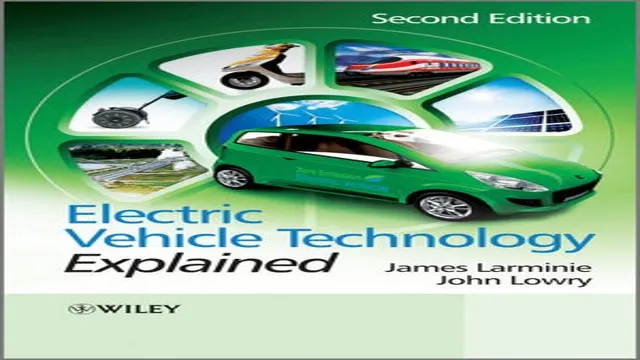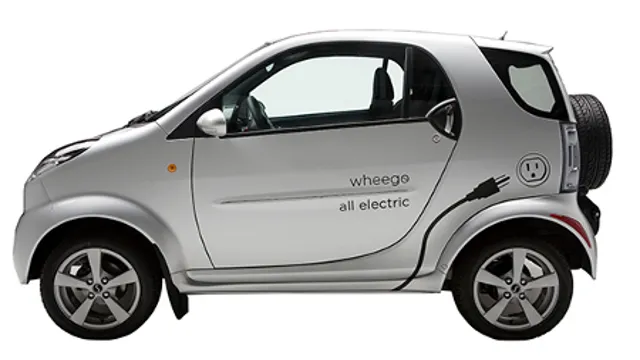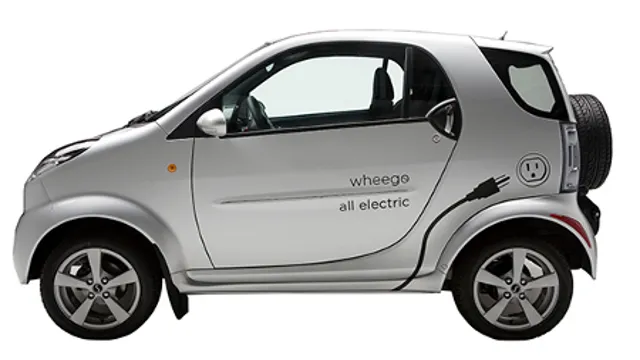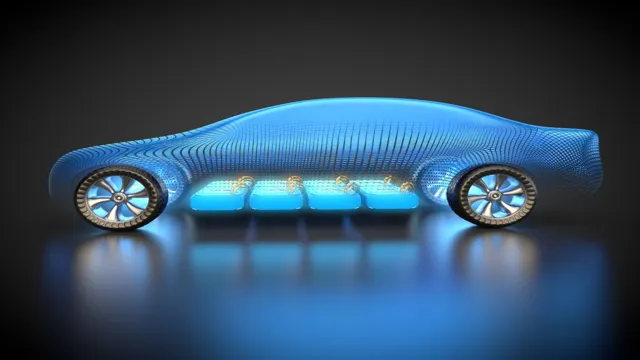Unlocking the Power of Electric Cars: Exploring Tesla’s Revolutionary Battery Technology
Tesla has long been known for its innovative technology in electric vehicles, and a big part of that success comes from the company’s battery technology. Over the years, Tesla has continued to evolve and improve its battery technology, offering longer driving ranges, faster charging times and overall better performance. But how exactly has Tesla’s battery technology evolved, and what impact has it had on its vehicles? In this blog, we’ll take a closer look at the evolution of Tesla’s battery technology, exploring its early beginnings, through to the latest developments, and what it all means for the future of electric vehicles.
So fasten your seatbelt and get ready to take a deep dive into the world of Tesla’s batteries.
A Brief History of Tesla’s Electric Car Line
Tesla has been at the forefront of electric car manufacturing, with breakthroughs in battery technology and exceptional automotive design. Tesla turned heads in 2008 with the release of the Tesla Roadster, an all-electric sports car that could achieve a range of up to 244 miles on a single charge. This launch paved the way for the Model S sedan, released in 2012 as the world’s first fully electric luxury car, boasting top-of-the-line features such as a massive touchscreen display and advanced autopilot capabilities.
Tesla continued its trajectory, leading the electric car market with the Model X SUV in 201 More recently, Tesla launched the Model 3 in 2017, aimed at making electric cars more affordable and accessible to the average consumer. The technology behind Tesla’s electric vehicles has been continuously refined, resulting in up to 370 miles of range on a single charge and impressive acceleration times.
With ongoing innovations in battery technology, Tesla is setting the bar for sustainable transportation.
From the Original Roadster to the Model 3
Tesla’s electric car line has come a long way since the release of their original Roadster back in 200 The Roadster was a two-seat, all-electric sports car that had a 245-mile range and accelerated from 0 to 60 miles per hour in just 7 seconds.
It was followed by the Model S in 2012, which was the first premium all-electric sedan. The Model S brought innovation with its touchscreen technology and semi-autonomous driving features. In 2015, Tesla released the Model X, an all-electric SUV with Falcon Wing doors.
The Model X included autonomous driving features and bio-weapon defense mode. Tesla’s most affordable car, the Model 3, was released in 201 It became wildly popular due to its affordable price point and impressive performance, including a range of 258 miles and acceleration from 0 to 60 miles per hour in just
3 seconds. With the release of the Cybertruck and the forthcoming Model Y, it’s exciting to see where Tesla’s electric car line will go next.

The Role of Batteries in Tesla’s Success
Tesla’s success is heavily attributed to the role of batteries in their electric car line. In the early stages of their development, Tesla struggled to get their battery technology right. However, the company eventually developed the lithium-ion battery, which revolutionized the electric car industry.
As a result, Tesla’s electric car line has been able to reach greater distances on a single charge than other electric cars on the market. This breakthrough in battery technology has allowed Tesla to create a niche for itself in the market and led to the company becoming a leader in the electric car industry. As Tesla continues to innovate and improve on its battery technology, they have been able to create electric cars that can drive further, charge faster, and cost less than ever before.
It is safe to say that without the role of batteries in Tesla’s success, the electric car industry would not be where it is today.
The Science Behind Tesla’s Battery Technology
Tesla’s electric cars are known for their impressive battery technology, which has revolutionized the way we think about renewable energy. The secret to their success lies in their use of lithium-ion batteries, which are commonly used in portable electronics but are also being increasingly used in electric vehicles. The key difference between Tesla’s batteries and those found in other electric cars is the number of cells used and the way they are arranged.
Tesla’s batteries use multiple cells arranged in a way that helps to distribute the weight of the battery more evenly and minimize heat dissipation, which is a common issue in other electric cars. Additionally, Tesla uses advanced software to manage the charging and discharging of their batteries, which helps to maximize their performance and lifespan. All in all, Tesla’s battery technology is a testament to their focus on innovation and their commitment to sustainability.
Lithium-ion and Beyond: What Makes Tesla’s Batteries Different?
Technology Behind Tesla’s Battery Innovation Tesla’s batteries are revolutionizing the electric vehicle industry, and for a good reason. Their batteries are not only more efficient, reducing the car’s weight, but they are also more energy-dense, meaning they pack more energy in a smaller space. This creates a more extended range and quicker acceleration.
So, what makes these batteries so different? Tesla’s batteries use Lithium-Ion technology, but with proprietary modifications, making them unique to Tesla. This allows them to achieve a longer lifespan, greater durability, and faster charging times. Additionally, Tesla’s battery design incorporates active cooling, which minimizes the risk of thermal runaway, common in most Lithium-Ion batteries.
As a result, Tesla’s batteries can handle high performance in extreme weather conditions. Apart from that, Tesla is continuously exploring new technology like solid-state batteries which can achieve higher energy density, longer range and even faster charging times. In conclusion, Tesla’s battery technology is a game-changer in the electric vehicle market, pushing towards a sustainable future.
Understanding Battery Management Systems
When it comes to electric cars, one of the most talked-about aspects is their battery technology. Tesla’s battery management system (BMS) is no exception. But what exactly does a BMS do? Put simply, it monitors and controls the battery’s state of charge, temperature, and voltage to ensure maximum efficiency and longevity.
This is crucial because lithium-ion batteries, which power most electric cars including Tesla’s, are highly sensitive to overcharging, overheating, and over-discharging. Too much of any of these can cause irreversible damage, reduce the battery’s capacity, and even pose a safety risk. That’s why Tesla’s BMS constantly communicates with each individual battery cell to keep them within safe parameters while also balancing their energy levels.
It’s like having a personal caretaker for your battery, ensuring it stays healthy and performs optimally. This advanced technology plays a key role in making electric cars like Tesla’s more practical, reliable, and sustainable.
The Future of Tesla’s Battery Technology
Tesla’s battery technology is a game-changer in the automobile industry. It is not just about powering electric cars, but it’s also about reducing the world’s dependence on fossil fuels. The science behind Tesla’s battery technology is fascinating.
These batteries use lithium-ion cells, which are lightweight and rechargeable. Unlike traditional batteries, they can store more energy in less space. Additionally, Tesla has made breakthroughs in battery chemistry, making their batteries more efficient and long-lasting.
In the future, Tesla’s battery technology is likely to evolve even further. With advancements in materials science and computer modeling, it is possible that we may see even more efficient and powerful batteries that can go further and charge faster. This is a thrilling time for renewable energy and electric vehicles as we look to a future that is more sustainable and efficient.
Benefits of Tesla’s Battery Technology
Tesla’s battery technology is revolutionizing the way in which we view electric cars. The benefits of this technology are numerous, such as longer ranges, faster charging times, and the ability to store excess energy generated from solar panels. The long-range capability allows drivers to travel further without the need to recharge, making them ideal for long trips.
Charging times have also been significantly reduced, with Tesla’s Superchargers being able to provide up to 170 miles of range in just 30 minutes. Meanwhile, the ability to store excess energy from solar panels means that drivers can reduce their reliance on traditional grid electricity, reducing costs and improving sustainability. Overall, Tesla’s battery technology is a game-changer for electric cars, making them a viable and cost-effective option for many drivers.
As the technology continues to develop, we can expect even more benefits and exciting developments on the horizon.
Longer Range and Faster Charging
Tesla’s battery technology has revolutionized the electric vehicle industry by providing cars with longer ranges and quicker charging times. This is because their batteries are made with high-density lithium-ion cells that can store more energy in a smaller space. This means that Tesla cars can now drive up to 400 miles on a single charge.
Additionally, their battery technology allows for faster charging times, with their supercharger stations capable of providing up to 170 miles of range in just 30 minutes. This means that drivers can now take longer road trips without worrying about running out of battery power. This technology has also made electric vehicles more accessible to those who may have been hesitant to switch over before due to concerns over range anxiety.
Thanks to Tesla’s battery technology, electric cars are now more practical and efficient than ever before.
Eco-Friendly and Low-Maintenance
Tesla’s battery technology has numerous benefits when it comes to being eco-friendly and low-maintenance. Firstly, the battery is rechargeable using clean energy sources such as solar panels, reducing the carbon footprint of the car. This means that Tesla cars emit significantly less greenhouse gases than traditional gasoline-powered vehicles.
Additionally, the batteries require very little maintenance over their lifetime, unlike traditional car engines which require regular oil changes, spark plug replacements, and other maintenance tasks that can be expensive and time-consuming. The low-maintenance aspect of Tesla’s battery technology also means that the cars have a longer lifespan, reducing the need for frequent replacements and further contributing to their eco-friendliness. Overall, Tesla’s battery technology offers an environmentally friendly and cost-effective solution for car owners, making it an attractive choice for those looking to reduce their impact on the environment.
The Impact of Tesla’s Battery Technology on the Electric Car Industry
Electric car manufacturers have been relying on fossil fuels until recently, thanks to Tesla’s battery technology. The Tesla battery pack is the most powerful and efficient on the market, giving their electric vehicles a longer range and quicker acceleration than their competitors. This groundbreaking technology has revolutionized the electric car industry, making it possible for drivers to go further without needing to recharge as often.
Furthermore, Tesla has set a new standard for sustainability in the automotive industry and has made electric cars more attractive to consumers who are looking for a more eco-friendly alternative. With Tesla’s battery technology, the electric car industry is growing rapidly, and we can look forward to a future where electric vehicles are the norm rather than the exception.
Conclusion
In conclusion, Tesla’s battery technology is electrifying the automotive industry and paving the way for a sustainable future. With its breakthrough advancements in energy density and charging speed, Tesla’s electric cars are revolutionizing the way we think about transportation. As the world continues to gravitate towards renewable energy sources, Tesla’s innovative battery technology is lighting the path forward, proving that eco-friendly and high performance are not mutually exclusive.
Simply put, when it comes to electric cars, Tesla is the shockingly smart choice.”
FAQs
What is the battery technology used in Tesla electric cars?
Tesla electric cars use lithium-ion battery technology, which allows for longer range and faster charging compared to traditional lead-acid batteries.
How long does it take to charge a Tesla electric car battery?
The charging time depends on the charging method used. With a Supercharger, it can take about 30-40 minutes to charge up to 80% capacity, and about 75 minutes to fully charge. With a regular Level 2 charger, it can take up to 12 hours for a full charge.
How does Tesla’s battery technology compare to other electric car manufacturers?
Tesla’s battery technology leads the industry in terms of range, performance, and charging speed. Other manufacturers are working to catch up, but Tesla remains at the forefront of battery innovation.
What is the lifespan of a Tesla electric car battery?
Tesla provides a warranty for the battery and drivetrain for 8 years or 150,000 miles, whichever comes first. However, the actual lifespan of the battery can vary depending on factors such as usage patterns, climate, and maintenance. Tesla batteries are designed to last for hundreds of thousands of miles before needing replacement.





